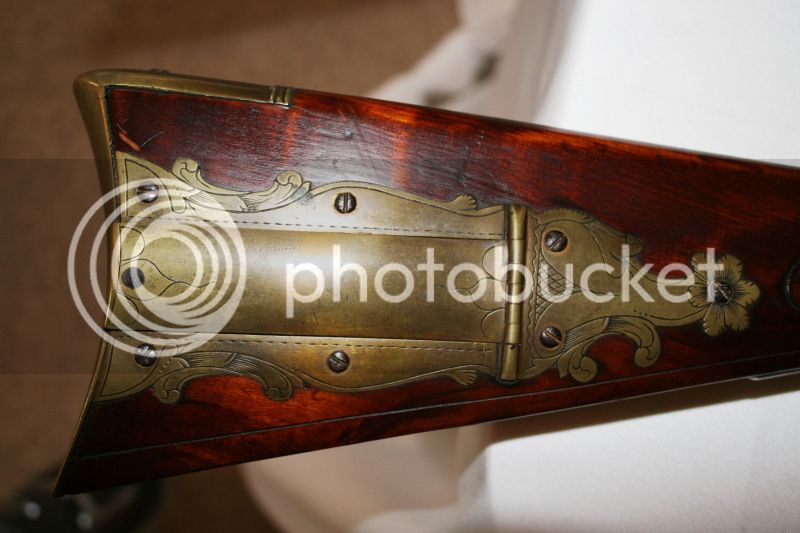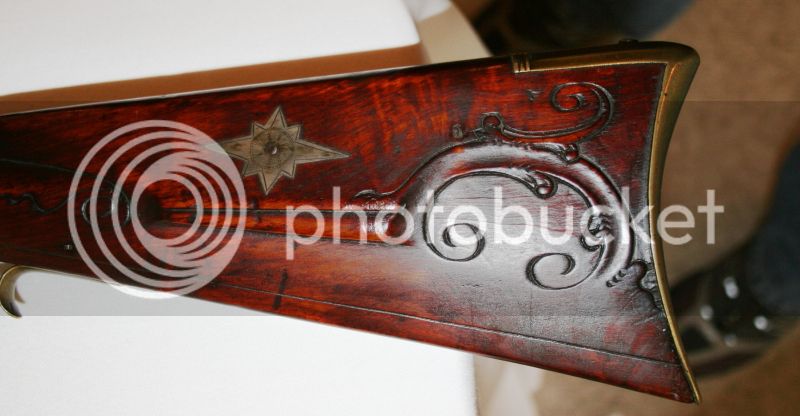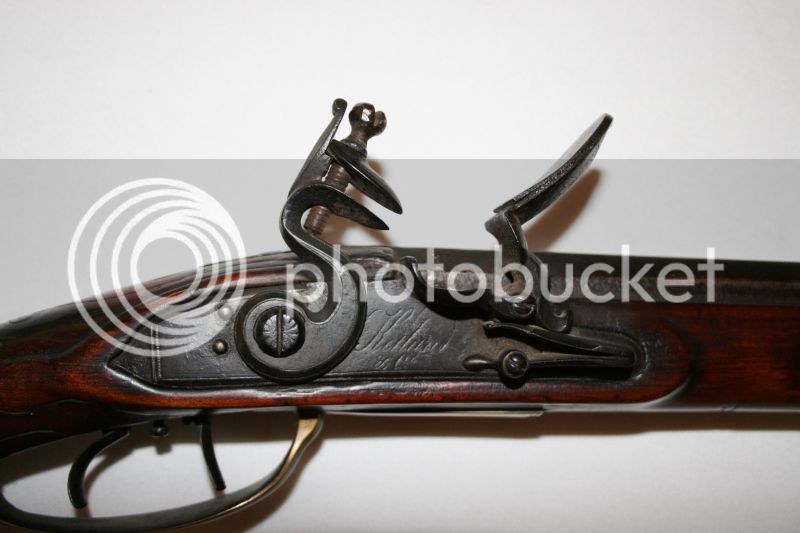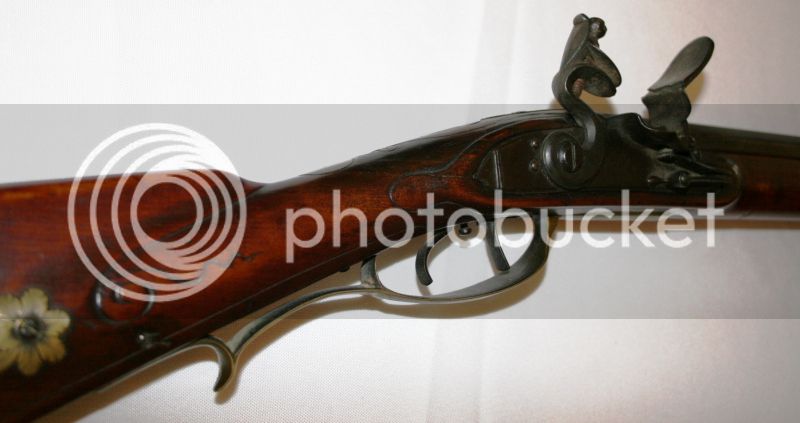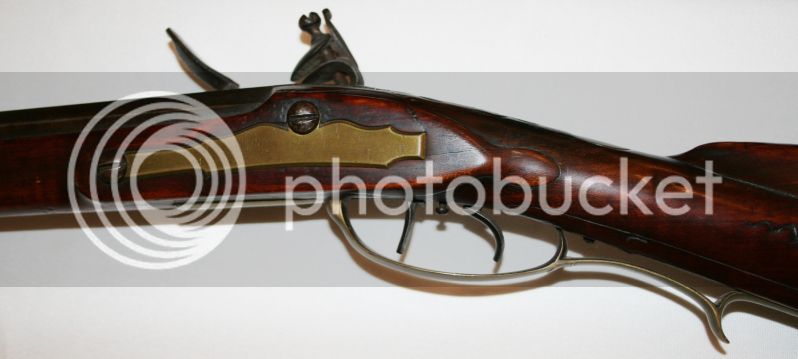"Early Virginia" now means guns and kits marketed as early Virginia rifles, and "Early Lancaster" now means guns and kits now marketed as early Lancaster rifles. Since they did not build guns to a pattern back in the day, there was a huge amount of variability in rifles built, for example, in Lancaster county, say 1770-1780, if that's the timeframe we're looking at. The same would be true in virginia, although I'd expect even more variations across a whole colony/state than in a single county.
In Lancaster during that period a great many rifles were in the style of Dickert, roughly, and would have a buttplate close to 2" wide and 5" tall, a triangular shaped buttstock, a sliding wooden patchbox or a brass box with a daisy finial. Carving would consist of a large C-scroll opening toward the toeline and another smaller one atop that.
Here's an original Dickert that is somewhat later, probably 1800-1810.
But there was great variability, and a Lancaster rifle by Fondersmith or Newcomer would have entirely different carving and details.
In general a Virginia rifle of the same period would have a similar shaped buttstock, but with a different trigger guard, carving at the comb would be shell-like rather than foliage-like, and would be more likely to have a large English lock, whereas a Lancaster rifle would generally but not always have a Germanic lock.
The guns and kits offered by today's purveyors under these names are generic but could readily be built up to incorporate specific signatures that would make them more recognizable as related to guns made by this maker or that maker.




